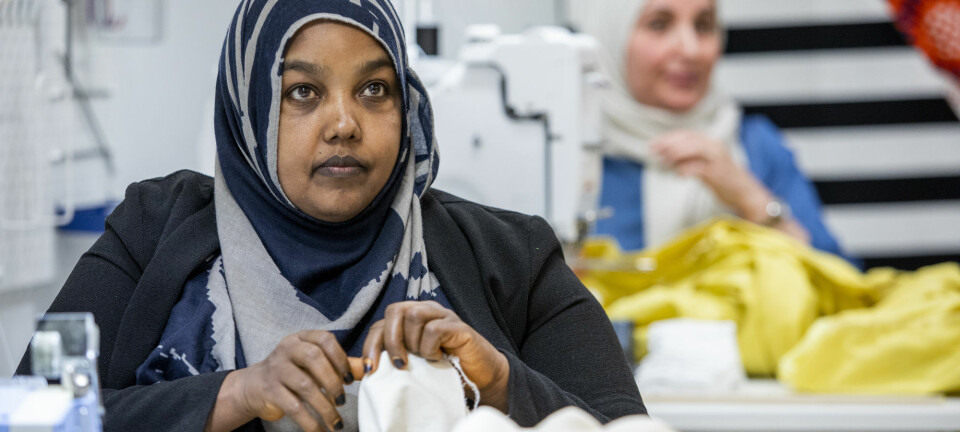
Why are Norwegian trade unions opposed to the EU's minimum wage proposal?
The EU is proposing to introduce a system of statutory minimum wages in EU and EEA member states. But in Norway, the Norwegian Confederation of Trade Unions (LO) adamantly opposes the EU Directive.
With LO (the Norwegian Confederation of Trade Unions) at the forefront, the parties in Norwegian working life are quite satisfied with the current system of collective bargaining. The trade union movement in other Nordic countries concurs.
LO does not want pay to be a topic for politicians, nationally or at the EU level. All wages must be negotiated between the unions and the employers, according to their website.
Within the European Trade Union Movement (ETUC) on the other hand, the view is that the EU's proposal for a minimum wage does not go far enough.
Collective agreements cover 70 per cent of employees in Norway
In Norway, none of the parties in working life are really dissatisfied with how the current system for determining wages works.
Among the approximately 70 per cent of employees in Norwegian working life who are covered by collective agreements, people have relatively high wages. Even those who earn the least have a relatively good salary compared to other countries.
Norway, Sweden and Denmark are then also not the countries that the EU primarily has in mind with its proposal. The EU's problem is only that when a new EU directive is introduced, it needs to cover all the countries in the EU/EEA.
The European Commission is clear that it won’t force Norway to introduce a system of minimum wage legislation. If the parties in Norwegian working life can live with the existing solutions, then they can continue as before.
So what is LO getting worked up about?
Does the trade union movement fear more generally that the EU will engage in inappropriate interference in Norwegian working life? Or does LO fear that if the EU implements minimum wage schemes in Norwegian working life, fewer people will be unionized?
Earnings continue to worsen for lowest paid
The European Commission's proposal, presented on 28 October, is intended to ensure workers in the Union a decent wage, no matter where in the EU they work.
According to the ETUC, workers in six EU countries earn a lower average wage today than they did ten years ago. This applies to workers in countries such as Greece, Spain and Italy. Workers in Finland, the Netherlands and Belgium have hardly experienced any wage increase.
The EU's idea is that good minimum wages not only ensure people a liveable minimum wage, but also help to curb growing economic inequality. With greater disposable income, more people in the EU will be able to buy goods and services. Requiring companies to pay a decent wage can also build fairer competition between companies.

The economic crisis in the wake of the pandemic is affecting workers in low-wage occupations – such as cleaning, retail, health care, nursing and caregiving – particularly hard. The majority employed in these fields are women.
“Almost 10 per cent of workers living in the EU are living in poverty: this has to change,” says Nicolas Schmit, who is the EU Commissioner for Jobs and Social Rights in a press release.
“People who have a job should not be struggling to make ends meet. Minimum wages have to play catch up with other wages which have seen growth in recent decades, leaving minimum wages lagging behind.”
Why shouldn’t Norway support this directive as a Europan Economic Area (EEA) country?
Minimum wage and collective bargaining
Twenty-one EU member states have statutory minimum wages.
Norway, an EEA country, and the 6 EU member states Sweden, Denmark, Finland, Italy, Austria and Cyprus instead have systems with collective bargaining agreements.
These are the differences:
- Statutory minimum wage sets a floor for how low a wage it is legal to pay. But in the EU countries, these minimum wage rates vary greatly. France and the Netherlands have about ten times as high a minimum wage as Bulgaria, where the minimum wage is less than €330 a month. The EU wants to regulate this.
- Collective bargaining agreements are actually another form of minimum wage – and are the norm in Norway. This kind of minimum wage will usually be higher than the statutory minimum wage. However, collective bargaining terms apply only between the parties to the collective agreement – the employers and the employees' union – and only to their members. Employers who are bound by the agreement may nevertheless be obliged to pay unorganized employees in the company the same salary as well.
- Extension of collective agreements means that more people are covered by the collective agreements, by taking effect for an entire industry or occupational group. A nonunionized company with nonunionized company employees will thus also have to use the extended minimum wage.
In the Nordic countries, only Finland, Iceland and Norway have extended collective agreements. In Norway, this only happens in industries where it has been documented that foreign workers may receive poorer wages and employment terms than what is normal in the industry. In practice, Norway thus has a minimum wage in industries such as construction, cleaning and the fishing industry. In the construction and cleaning industries, for example, the minimum wage for unskilled labour is now approximately €18 per hour.
Low German wages
The Fafo Research Foundation in Oslo recently arranged a webinar on the EU's minimum wage proposal. Joost Korte, the EU's Director General for Employment, was one of the speakers.
Korte began his lecture by reiterating Nicolas Schmit’s point, that one in ten workers in EU countries now live below the poverty line and that the Union must remedy this.
“The corona pandemic has made the situation even worse for many in the EU. We have to try not to end up where we did during the financial crisis ten years ago, when several of the economic measures implemented came at the expense of society’s lowest wage earners,” Korte said.
During the Fafo webinar, the EU Director General was clearly upset that so much "fake news" is being spread about what the EU wants to achieve with its proposal for a minimum wage.
“This is not about Norway having to introduce a minimum wage,” he said. “The proposal creates a framework to ensure that all workers in the EU receive a minimum wage. Only a few rules will apply to all countries.”
“Norway is definitely not among the countries where the minimum wage for workers is far too low,” Korte said. He made no secret of the fact that the proposal is rather intended to apply to countries such as Hungary, Poland and Bulgaria.
Specifically, Korte suggested that the minimum wage rates should be around 50 per cent of the average wage and 60 per cent of the median wage in the individual EU/EEA countries. In practice, this will lead to a clear increase in the minimum wage in several EU countries, not only in poor countries in Eastern Europe, but also in a richer country like Germany.
“This kind of salary increase would have been a very good Christmas present for many German workers,” Korte said.
According to a Norwegian Fafo memorandum from 2014 (PDF), the statutory minimum wages in Europe at that time were about 30 to 50 per cent of the countries' average wages.
So what is LO's problem?
“LO does not want to see a directive on the minimum wage in Norway,” said LO's deputy leader Peggy Hessen Følsvik during the Fafo webinar.
“The directive isn’t necessary. Wage formation should be the responsibility of the parties. We don’t want the EU to have an influence on wage formation in Norway,” she said.
“Of course, we agree that everyone in Europe should earn a decent salary. In countries where the parties in working life have weak standing, it’s understandable that they want to introduce minimum wage schemes,” she added.
Følsvik and LO's fear is that the EU will intervene in the present autonomy of the parties in Norwegian working life. This is both undesirable and unacceptable, according to LO's deputy leader.
What if Norway falls below 70 per cent?
Stian Sigurdsen is the director of the employers' organization Virke, which is the main organization for the trade and service industry. He agreed with many of the LO deputy leader's views.
“My reaction is still that this EU directive proposal doesn’t look so bad,” Sigurdsen said.
“We could have informed the EU that they should just leave us alone. But the question is whether the EU would go along with that,” he said.
He pointed out that 70 per cent could be an important key figure in the future.
The EU has in fact indicated that if 70 per cent of the workers in a country are covered by collective agreements, then the EU will consider this satisfactory.
Norway's problem is that the country is presently at exactly 70 per cent. And this percentage is dropping.
“We could soon end up well below this limit in Norway. The lower we get, the greater the risk that the EU will intervene,” Sigurdsen said.
During the webinar, the Virke director reminded people that today only about a third of employees in Norway are organized in the private service production sector. This sector is expected to grow significantly in the years to come.
Given these trends, we could see fewer and fewer people in Norway covered by collective agreements.
Sigurdsen believes that one solution may be to ensure that more workers are organized, first and foremost in those parts of private working life where the degree of organization is currently low. He pointed out that the employer side has succeeded in getting more and more companies involved. Virke currently has over 24 000 member companies.
Translated by: Ingrid P. Nuse
———
Read the Norwegian version of this article on forskning.no
































